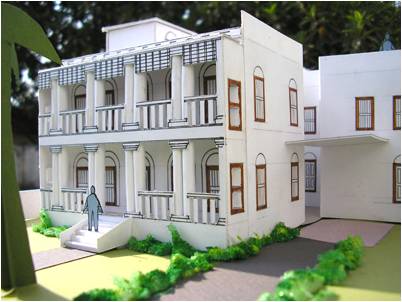
Case Study of Traditional House of Jagacha in West Bengal
(Paper Model by architecture student)
INTRODUCTION
- The traditional house of my case study is 120 years old and lies in “Howrah” district of West Bengal.
- It is a house of zamindar and was constructed during British rule in India.
- Presently 9 members are residing in the house.
- Gradually, over a period of time renovation work has been done and many changes happened.
- The traditional house evolved over generation is based on the family customs & needs.
- The form of traditional house has emerged as a result of economic, social, cultural, physical features and climatic considerations of the region.
SITE LOCATION
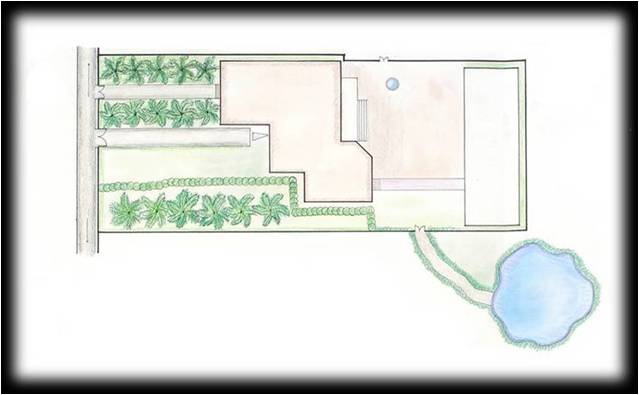
SITE PLAN
- The site lies in Howrah district of West Bengal.
- The house is located in the “Jagacha” a small town on the west coast of Hoogly river.
SITE FEATURES AND CONTEXT
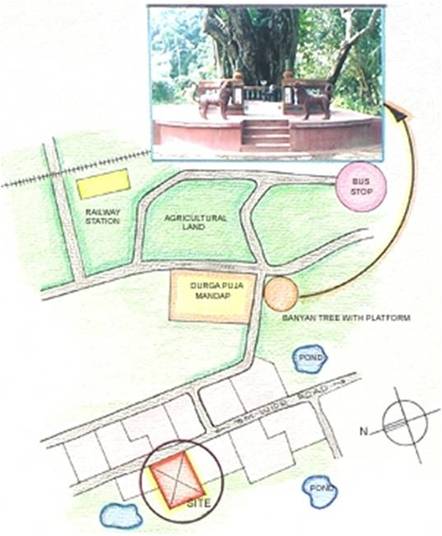
SITE CONTEXT
- The site is 3 km away from the railway station called “Satragachi” in Howrah.
- The site lies in a proper residential area where most of the residents are affluent.
- A pond lies near the site which forms a source of water for the neighboring dwelling units.
GEOGRAPHICAL CONDITIONS
- Beside the river Hooghly, the town has water bodies, lakes and ponds (pukurs).
- The soil is firm and is of indo – Gangetic alluvial type.
- It is a low lying prone to flooding during monsoon seasons.
ZONING
- There is a single entrance in the front façade, through a corridor.
- Public zone such as living room is in the front to restrict the entry of the guest to the rest of the house.
- Semi private zone such as kitchen/dining is at ground floor for easy assessment from all rooms.
- Toilets used to be outside the premises of the house but now after renovation it is included in the main block of the house.
- Well is located at the back of the house for an easy access from the kitchen and the bathroom.
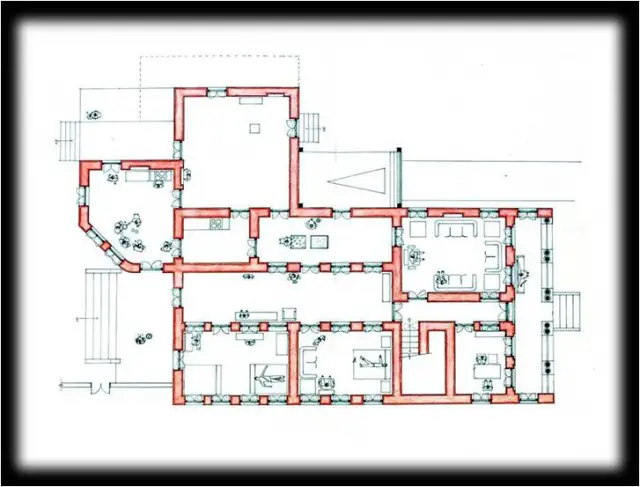
GROUND FLOOR PLAN
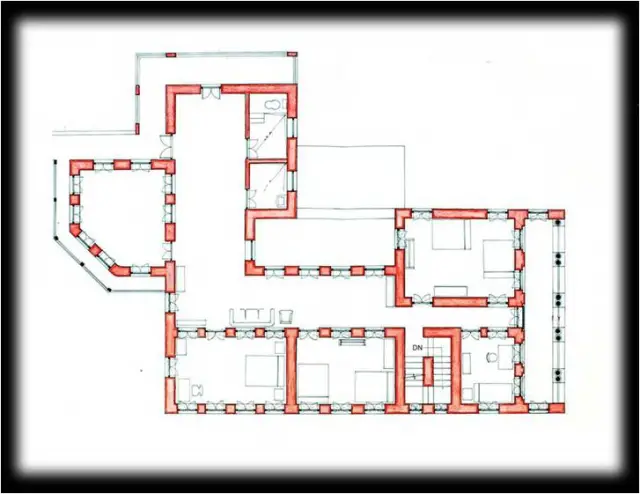
FIRST FLOOR PLAN
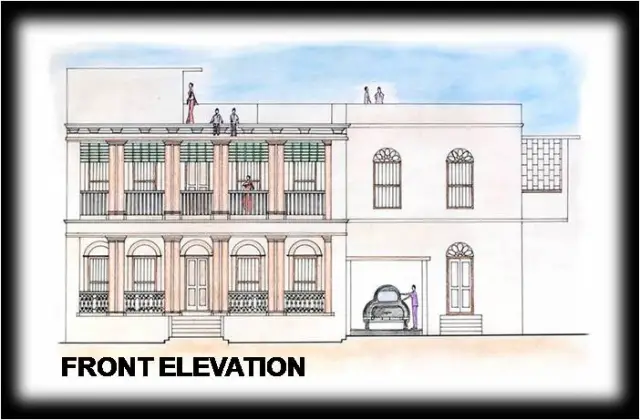
FRONT ELEVATION
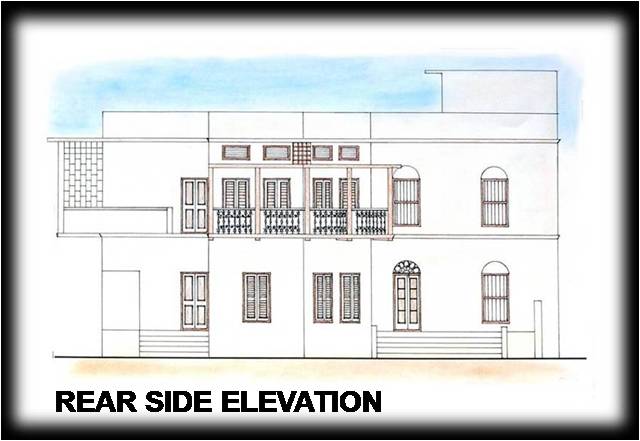
REAR ELEVATION
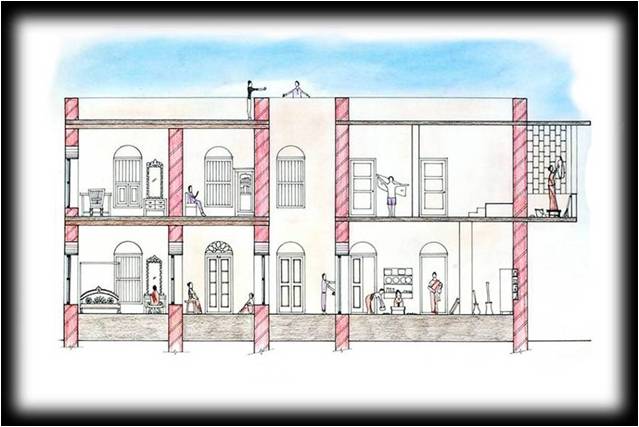
SECTION AA’
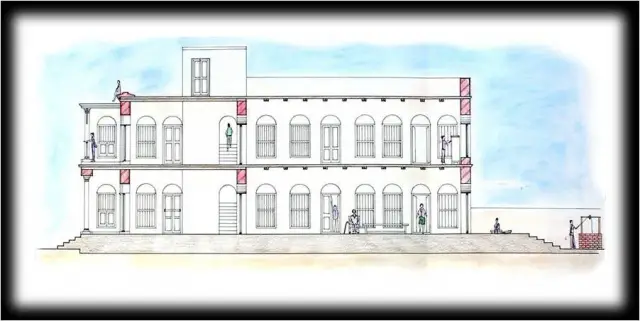
SECTION BB’
OPEN SPACE AND BUILT FORM ACCORDING TO CULTURAL ASPECT
- The zamindarshad high status, that is why the front façade of the building is grand and seen from a distance.
- This is done by raising the plinth of the plot by 1m from the road level.
- When the building was constructed untouchability was practiced in India, that is why a separate entry was made for the servants from the backyard due to custom of untochability.
- Since they are Brahmin, the pooja room is quite separated from the other activities of the house on second floor.
- All the bedrooms were placed in the backside of the house because women were not allowed to enter the front façade.
- The influence of the colonial era can be seen clearly in the architecture of the dwelling. The entrance has a big verandah with columns and semi-circular arches window with cornices.
CLIMATIC CONDITIONS
West bengal lies under warm and humid zone.
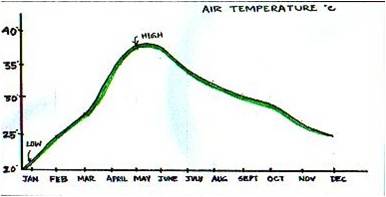
TEMPERATURE
- SUMMER – 30 C TO 35 C DURING DAY AND 25 C TO 30 C IN THE NIGHT
- WINTER – 25 C TO30 C DURING DAY AND 20 C – 25 C IN THE NIGHT
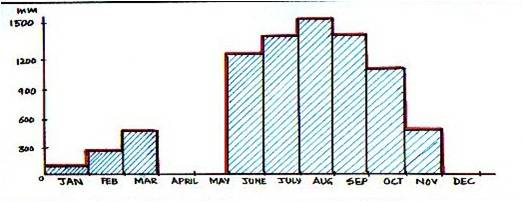
PRECIPITATION
- 1400 mm PER YEAR.
- MAJORITY RAINFALL – MID JUNE TO MID OCTOBER, WHICH IS OBTAINED FROM SOUTHWEST MONSOON WINDS.
- Skies are generally clear.
- The sky is overcast during monsoons.
- The wind is generally from one or two prevailing directions with speeds ranging from very low to very high.
- Relative humidity: humidity is generally very high, about 70 – 90 % throughout the year.
FENESTRATIONS
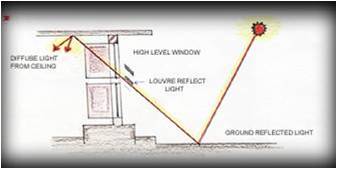
DAYLIGHTING – Strong direct sunlight from clear skies is reflected inside the house by high level window for ensuring adequate diffuse light.
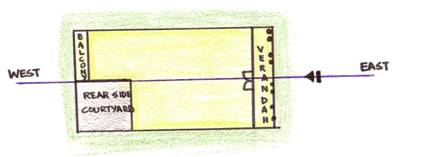
ORIENTATION AND PLAN FORM –
- The building is an east-west orientation longer axis along the east-west.
- Both in east and west side balconies are provided to avoid direct sun radiation.
- A long and narrow corridor allow cross-ventilation.
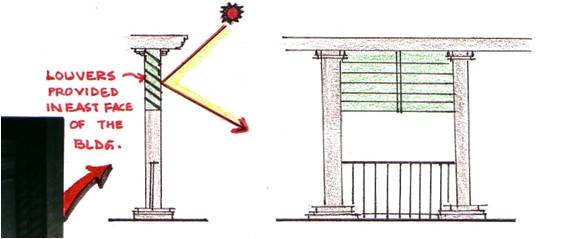
In east side façade, balconies with long columns and between them louvers are provided to shelter the rooms from sun and rain.
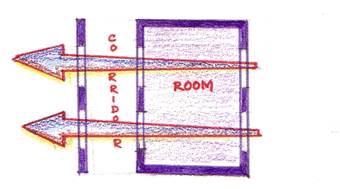
Doors and windows are opposite to each other for proper cross ventilation.
OPEN SPACES AND BUILT FORM ACCORDING TO THE CLIMATC RESPONSE

SECTION THROUGH THE SITE
- 60% of the plot area is built form.
- Open space is on all four sides to promote ventilation.
- The building faces the east.
- The building is rectangular in shape to receive minimum solar radiation from east and west side.
- From the main road, the building is 20m away, so that it is protected from the dust.
- Flat roof is used for activities like drying masala, clothes, playing, sleeping in the night, sitting etc.
- Since the area is prone to floods during monsoon, the plinth is 1 m.
- For protection against rain and solar radiation, deep verandahs are provided on both east and west sides and the walls are 500 mm thick.
- The height of the room is 3.6m.
ACTIVITIES PERFORMED BY WOMEN IN A TRADITIONAL DWELLING
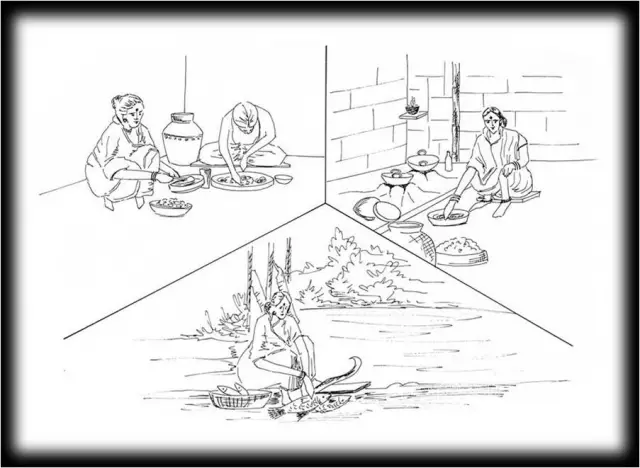
BUILDING MATERIALS
- Locally available bricks of clay are used for the walls.
- Lime plaster is used as binding material.
- Indian patent stone is used for the flooring.
- Wooden beams are used to support the flat roof.
- Wooden window frames and shutters are used which open inside the house.
- Wooden louvers are used in the front verandah to obstruct the direct entry of sunlight from east side.
- Iron beams are used to secure the openings of the windows.
- Railings are made out of brass.
BUILDING ELEMENTS
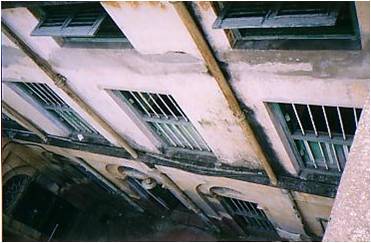
No sunshade
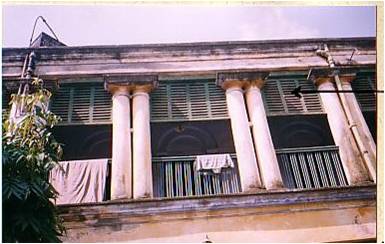
Entrance through verandah
Long pilasters in the verandah
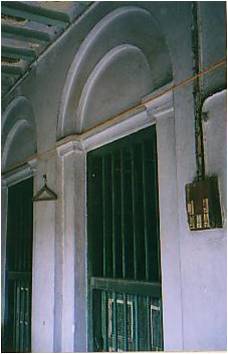
- Semi-circular arch windows with cornices
- Construction materials – bricks and wood
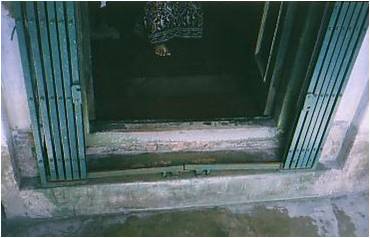
Doors with thresholds

Leave a Reply
You must be logged in to post a comment.